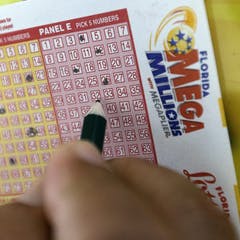
Statistics show that there are nearly 186,000 retail outlets selling lottery tickets. The majority of these are located in California, Texas, and New York. Three-fourths of retailers also offer online lottery services. In addition to convenience stores, lottery retailers include nonprofit organizations, restaurants, bars, and newsstands. In 2003, lottery retailers contributed about half of the nation’s revenues. But that number is expected to grow as the lottery industry grows and becomes more popular.
Marketing to poor people
Despite what you may think, the lottery is not intentionally targeting the poor. In fact, most people purchase lottery tickets outside of their neighborhoods. In fact, high-income neighborhoods are not densely populated with lottery outlets, and low-income neighborhoods have fewer. However, the poor still buy a fair share of tickets. There are several reasons why lottery marketing to poor people is not a good idea. The most important is that low-income people tend to spend more on lottery tickets than their more fortunate counterparts.
In the United States, the government’s reliance on gambling revenues puts enormous pressure on lottery companies to advertise aggressively. This approach hurts the lower-income Black and Hispanic population, who are often more likely to spend money on lottery tickets. Moreover, the poorest people don’t have bank accounts. As a result, lottery companies are spending more on marketing to these groups. In order to attract lower-income consumers, they must offer affordable tickets and promote them with an attractive image.
Unscrupulous record keeping
A lottery administrator’s policies require an internal review if a player wins twenty or more $1,000 prizes in a single year. The policy includes a process for an internal review to determine if the player has violated the policy before facing a penalty. While the lottery administrator argues that the lottery games are secure and that frequent winners do not alter the odds, the former state inspector general questions the effectiveness of this policy.
Regressivity of lottery participation among lower-income people
This article focuses on the regressivity of lottery participation among lower-income groups. It looks at the economic benefits, the potential addiction, and the costs of lottery tickets. It also explains why lottery play is more regressive when income is controlled. However, this article does not address whether lottery sales are targeted towards low-income households. It does look at whether lottery playing is a positive or negative social behavior.
The authors find that regressivity of lottery participation among low-income people is highly variable, but there are several ways to estimate its extent. They use county-level data from the Kansas State Lottery to estimate lottery participation among various classes. They test the regressivity of lottery participation by comparing the mean per capita bet among different classes. This is done using the standard “t-test” by defining classes according to median educational attainment, employment rate, and white population percentage.
Unclaimed lotto jackpots allocated differently by each state
There are many reasons why a lottery prize might go unclaimed. It may be due to misplacing your ticket, forgetting your winning numbers, or other mishaps. In the United States, unclaimed lotto jackpots go back to the state that sold the ticket. Some states return these unclaimed jackpots to players as second-chance contests, while others may use them for special purposes.